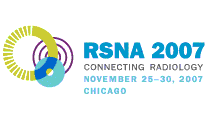
Abstract Archives of the RSNA, 2007
SSC19-09
Accuracy of Multidetector Row Computed Tomography for Assessing Aortic Valve Stenosis: Comparison with Echocardiography and Calibration against Cardiac Catheterization
Scientific Papers
Presented on November 26, 2007
Presented as part of SSC19: Cardiac (CT)
Alexander Ewald Lembcke MD, Presenter: Nothing to Disclose
Holger Thiele MD, Abstract Co-Author: Nothing to Disclose
Stefan Nitzsche, Abstract Co-Author: Nothing to Disclose
Franziska Riese, Abstract Co-Author: Nothing to Disclose
Dietmar Edvard Kivelitz MD, Abstract Co-Author: Nothing to Disclose
To evaluate aortic valve orifice area (AVA) measurements using multidetector row computed tomography (MDCT) compared to transthoracic echocardiography (ECHO) and cardiac catheterization (CATH) as reference.
A total of 152 patients (84 males, age 36-89 years) with proven aortic valve stenosis of different severity grades underwent a standard contrast-enhanced, ECG-gated MDCT with a collimation of 64x0.625 mm, rotation speed 420 ms, pitch 0.2, 120 kV, 800 mAs/slice). Planimetric AVA measurements at MDCT were compared with ECHO (using the continuity equation based on Doppler data) and CATH (using the Gorlin formula).
Using MDCT the aortic valve orifice was visible at peak systole with acceptable quality in all cases. AVA measurements at MDCT correlated well with ECHO (r=0.87) and CATH (r=0.90). However, on average AVA at MDCT (mean 0.98±0.47 cm², range 0.34–2.14 cm²) was significantly larger compared to ECHO (mean 0.83±0.37 cm², range 0.3±1.95 cm²) and CATH (mean 0.80±0.39 cm², 0.2±1.90 cm²). For aortic valve stenosis grades I, II, III and IV (as determined by CATH) the mean AVA sizes at MDCT were 1.89±0.34 cm², 1.45±0.19 cm², 0.94±0.21 cm² and 0.69±0.21 cm², respectively. Based on ROC-analysis the most suitable thresholds at MDCT for differentiating between grades were AVA sizes of 1.6 cm², 1.2 cm², and 0.9 cm². Using these adjusted threshold levels individual severity grades were differentiated (grades I vs. II-IV, I-II vs. III-IV, and I-III vs. IV, respectively) with sensitivities of 94%, 97%, and 87% and specificities of 93%, 97%, and 88%, respectively. There was perfect agreement in classification of aortic valve stenosis between MDCT and CATH in 116 (76%) patients and a mismatch by one grade in 36 (24%).
AVA measurements at MDCT correlate closely with echocardiography and cardiac catheterization. However, a systematic difference between these techniques should be considered prior to clinical decision making.
MDCT may be used as an additional imaging tool in patients with suspected aortic valve stenosis but persistent diagnostic uncertainty.
Lembcke, A,
Thiele, H,
Nitzsche, S,
Riese, F,
Kivelitz, D,
Accuracy of Multidetector Row Computed Tomography for Assessing Aortic Valve Stenosis: Comparison with Echocardiography and Calibration against Cardiac Catheterization. Radiological Society of North America 2007 Scientific Assembly and Annual Meeting, November 25 - November 30, 2007 ,Chicago IL.
http://archive.rsna.org/2007/5016148.html

